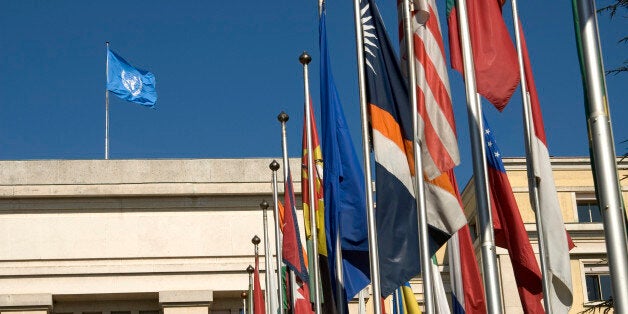
The 2030 Agenda for Sustainable Development will be a landmark agreement. It has the potential to become for the 21 Century what the Universal Declaration of Human Rights was for the 20 Century. One hundred ninety-three countries will unanimously adopt the holistic and highly complex Agenda, and they will commit to implementing it. The adoption will be a festive moment at the United Nations and governments will be praised. But after the ceremonies are over, the work of the governments will be followed both domestically and internationally, and they will be held to account. The tough negotiations were inclusive, multi-stakeholder and transparent -- and so must be the implementation.
The Agenda, with its 17 Sustainable Development Goals (SDGs), will not be legally binding, but will carry great moral weight. It will change societies for the better, in many ways. It has the potential to affect how we live, produce and consume and treat the environment, in a transformative way. But it will work only if robustly implemented. And implementation has to start right away. The first real test of how serious we are will be the Paris Summit on Climate Change. Paris needs to produce a strong, legally binding agreement. We come from a variety of backgrounds and state of development, but we are all trying to reach a path toward sustainable development.
Down the line, competing political priorities, domestic and international crises, turbulent economic currents and wars and conflicts will put brakes on implementation and divert attention away from the Agenda. That is why it would be important to strongly anchor implementation and monitoring to permanent national and international mechanisms.
A key challenge is also how we communicate the importance of this universal Agenda to ordinary people and politicians. The SDGs combine on a unique way the social, economic and environmental dimensions to form a modern trinity upon which a sustainable future can be built. We have moved from working hard -- and often in silos -- on GDP growth, environmental protection and social programs, to understand that a more cohesive take and policy coherence is required. A multiplicity of goals, targets and indicators is needed, as is segregated, high-quality data. The welfare of people and the planet cannot be measured in a simple way.
Human rights, gender equality, education, decent work, technology transfer, trade and governance issues are some of the key components of the Agenda. The SDGs can be regarded as a continuation of the Millennium Development Goals, having deep roots also in the 1992 Rio declaration and Agenda 21, but they take us -- all of us -- further and deeper, adding new layers of actors and those accountable. Individuals, communities, NGOs, businesses, academia, nations and international bodies are all vitally important agents in this challenge. New global partnerships need to be formed and used. Those who have more means will also have to assist others.
The concrete measures in different regions and countries will of course take into account the local cultures and modes of governance. There are already a lot of good and innovative practices out there and more will be developed, and we should keep an open mind to learn from each other. Here the private sector and the civil society will be paramount partners to governments. Societies will also have to involve their own marginalized and vulnerable sections in this work, not only as beneficiaries but also as active agents. We have overused a lot of the resources of our planet, but the social and human capital of women, youth and the poor is still largely unused. That is where the real partnerships and momentum for successful implementation lies.
The SDGs require resources and investment, but the pay back will also be considerable. The goals are mutually reinforcing and the benefits multiply. The more committed and holistic your approach is, the more you will win. Policies and action will have to be geared and look toward the future, and not just short electoral cycles. We know what the problems are and we know what should be done. We also have more resources than ever on this planet. Now it is a question of political will -- of courage, vision and solidarity -- to make a happier sustainable future a reality for all.
This post is part of a series produced by The Huffington Post, "What's Working: Sustainable Development Goals," in conjunction with the United Nations' Sustainable Development Goals (SDGs). The proposed set of milestones will be the subject of discussion at the UN General Assembly meeting on Sept. 25-27, 2015 in New York. The goals, which will replace the UN's Millennium Development Goals (2000-2015), cover 17 key areas of development -- including poverty, hunger, health, education, and gender equality, among many others. As part of The Huffington Post's commitment to solutions-oriented journalism, this What's Working SDG blog series has focused on one goal every weekday in September. This post, published on the day the conference is scheduled to start, addresses all the Goals.